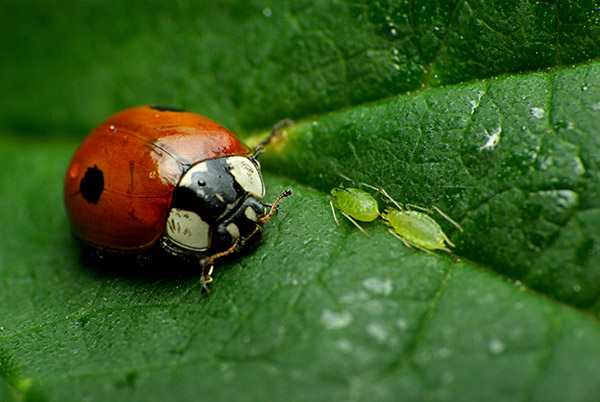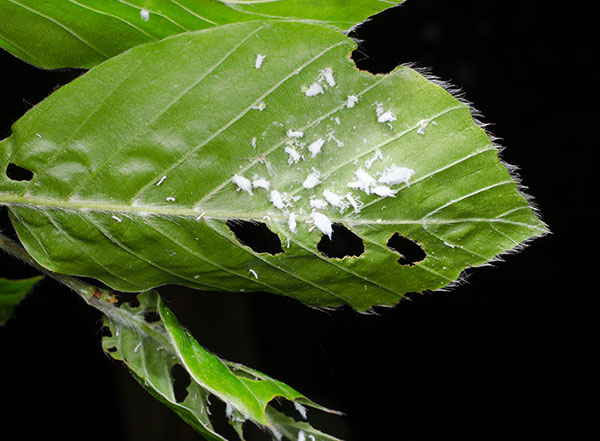Through the biological control, we try to rule and contain the action of insects harmful to the cultivated plants, thanks to the presence of some allies such as ladybugs, earwigs, chrysopae, and others. Being their natural opponents, they are their main predators. You have already met the main useful insects visiting your wild garden, now we find out who they can "fight”.
Who are the phytophagous insects?
They feed greedily on plant tissues, including leaves, stems and roots, often causing damage to plants grown in the lawn and vegetable garden. Here are two of the best known:
The aphids
Surely you have already seen them, they are the so-called "plant lice". How do they feed? They suck and absorb the sap of the green organs of the plants, through their piercing-sucking mouthparts.
There are many species (all small) from 1 to 4 mm of length; the colour may vary from green to black, from grey to reddish. In a short time, they create countless colonies.
The exceeding lymph is ejected in the form of honeydew, a sugary substance that is a source of food for several insects. Ants, in particular, practically "breed" aphids to sweat their production of honeydew: they move them from one food source to another and protect them from predators, basically like humans do with their livestock.
Who feeds on aphids in the wild garden? Ladybugs (both larvae and adults), larvae of sirphids and chrysopae, earwigs, several insectivorous birds, such as tits, blackheads, swallows.

The cochineals
Also equipped with a piercing-sucking mouthpiece, they feed on the sap of the host plants, even if it is only the female who does it, because the male does not have such mouthpiece “equipment”. Cochineals are soft-bodied, flat, and oval-shaped; if observed under the microscope, these insects look like oval naps existing on the leaves of the plant, their target.
The adult cochineal is essentially immobile, produces waxy substances that form a sort of shield, under which it finds protection.
There are wasps that lay their eggs inside the waxy shield of some species of cochineals. The larvae then become parasites of the phytophagous insect, killing it.
Who feeds on cochineals in the wild garden? Without doubt the ladybug, both larval and adult.
